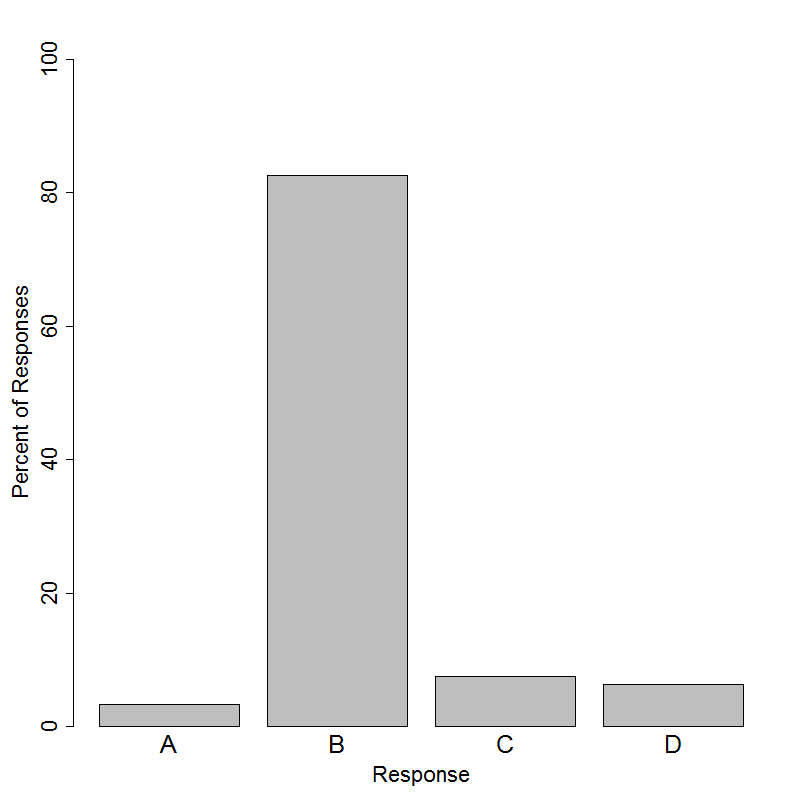A middle school class found that there was a relationship between the number of seeds in a pumpkin and the number of ribs on the pumpkin. The more ribs the pumpkin had, the more seeds it had. Can it be concluded that the more ribs a cantaloupe has, the more seeds it has?
(A) No, because cantaloupes are usually much smaller than pumpkins.
(B) No, because data have only been collected on pumpkins and not on cantaloupes.
(C) Yes, because both pumpkins and cantaloupes are fruits and all fruits have similar properties.
(D) Yes, because both pumpkins and cantaloupes are round and seeds inside would grow the same way.





The correct answer to this question is Option (B). The question asks students to recognize the limitations of the scope of inference. Because data were only collected on pumpkins, it is not appropriate to draw inferences about cantaloupes.
Acknowledging that conclusions drawn from one sample may not apply in another instance lays a part of the foundation for understanding random sampling. Just as conclusions drawn from a study of pumpkins should not be applied to a statistical question about cantaloupes, inferences about a population are invalid if the sample is not representative of that population. After analyzing data, students should always consider what generalizations are appropriate based on how the data were collected.
All of the incorrect answer choices appeal to different assumptions about the relationship between pumpkins and cantaloupes. While these facts are all true (e.g., a pumpkin is a fruit), it is dangerous to assume how the association between the number of seeds and the number of ribs will be affected. The incorrect answer options fail to recognize the need for appropriate data and the danger of drawing conclusions that are not supported by data.